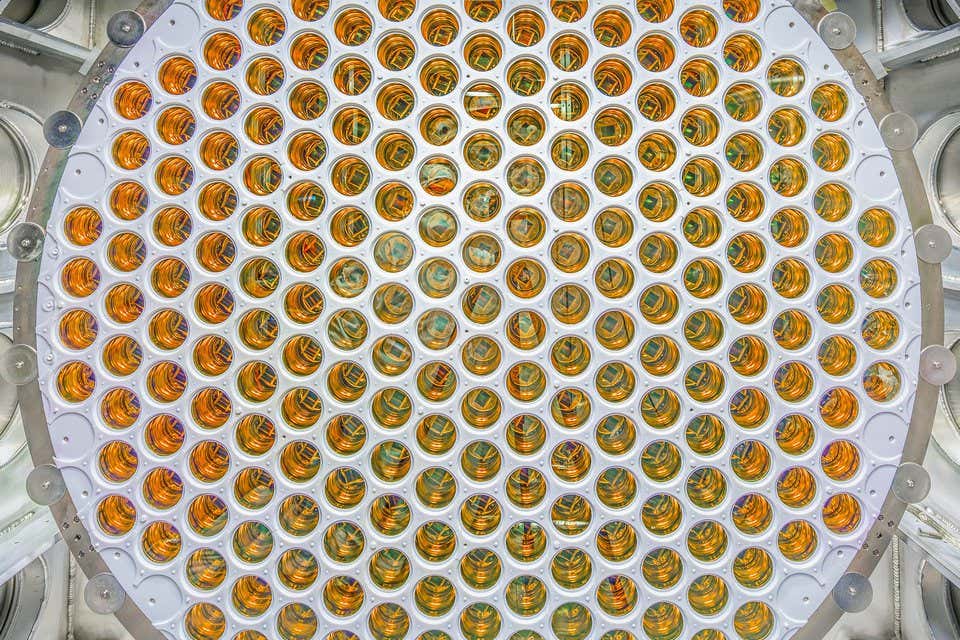
An array of sensors at the LUX-ZEPLIN dark matter experiment in South Dakota
Matthew Kapust/Sanford Underground Research Facility
The latest hunt for dark matter has come up empty handed so far, but the upside is that physicists can now set the tightest constraints ever on the nature of this mysterious substance. New measurements from the LUX-ZEPLIN (LZ) experiment in South Dakota mean we are either closer than ever to finding particles of dark matter or ruling out the most popular explanation for it.
Dark matter doesn’t interact much with regular matter or with light, so we can’t see it. We only know that it exists because of its gravitational effects, but those effects indicate it makes up over 80 per cent of all matter. The leading explanation for dark matter has long been that it is made up of weakly interacting massive particles (WIMPs), but hunts for these fundamental entities have found nothing yet.
LUX-ZEPLIN, a dark matter detector made of 7 tonnes of liquid xenon buried 1.5 kilometres underground, is the most sensitive yet – but after 280 days of searching, it hasn’t found any WIMPs. “We’re the world’s best at not finding dark matter,” says LZ spokesperson Chamkaur Ghag at University College London.
Advertisement
While this result may seem like a disappointment, it has allowed physicists to place tight constraints on the nature of dark matter, reducing the range of properties it could have. The constraints are nearly five times tighter than the previous best, drastically narrowing down the possibilities for WIMPs. This work was presented at two physics conferences – TeV Particle Astrophysics in the US and LIDINE in Brazil – on 26 August.
“It’s as if we’ve been told there’s some magical fish that lives in the ocean and we have no idea where it is,” says Ghag. “We get into the ocean, swim around, get out, get a snorkel, swim around, still don’t find it, get a submarine.” If the magical fish is a WIMP, researchers have now explored about 75 per cent of the ocean without finding it, he says.
“This is the next big step forward, and it’s one in a long line of such steps,” says Dan Hooper at the Fermi National Accelerator Laboratory in Illinois, who wasn’t involved in this work. “In any one of these steps forward, it might be fair to say we don’t expect to see anything. But if you take enough of these steps, it seems not unlikely that we could see something.”
At this point, many initially popular ideas for possible types of WIMPs have been ruled out. There are still some left, but LZ isn’t done yet – it is expected to make 1000 days of observations in total before it ends in 2028. “If LZ doesn’t see WIMPs, and the next generation detector, XLZD, does not see WIMPs, it’s kind of over for WIMPs,” says Ghag. The XLZD project is still in the planning phase.
If WIMPs don’t make up dark matter, that will be a huge paradigm shift, but physicists won’t give up entirely on finding dark matter. “If you’re trying to solve a murder investigation, and you’ve got 20 suspects, and you find out that 10 of them have good [alibis], you don’t go, ‘well I guess there wasn’t a murder’. You just have a better idea of who the right suspect might be,” says Hooper. “We cross some of our suspects off the list, and the search gets narrower and more focused – that’s what progress looks like in this field.”
Topics:





